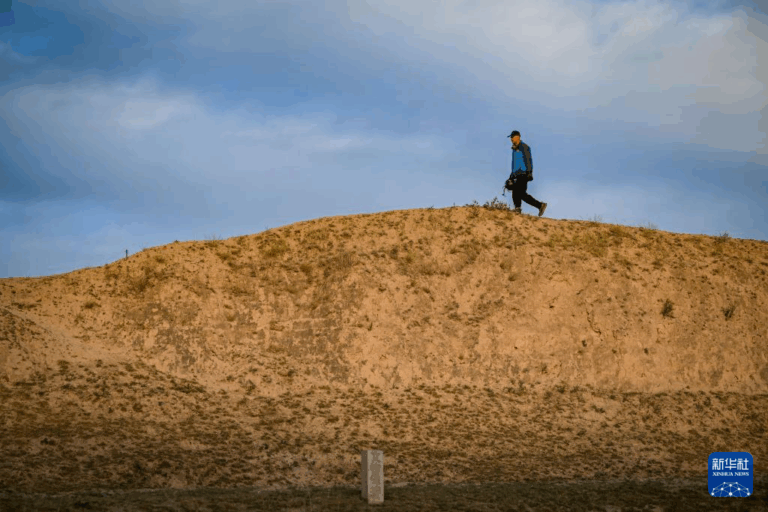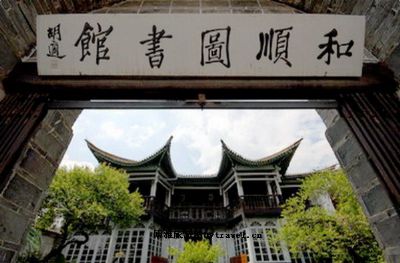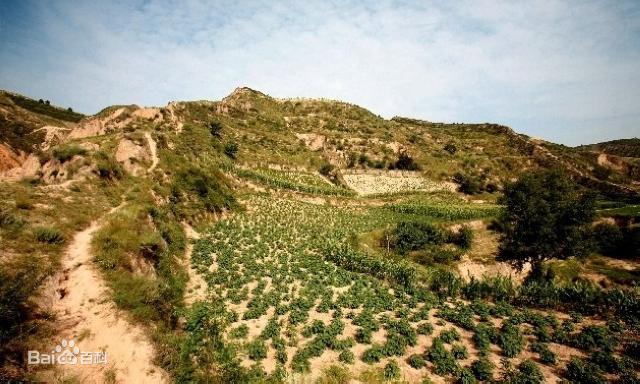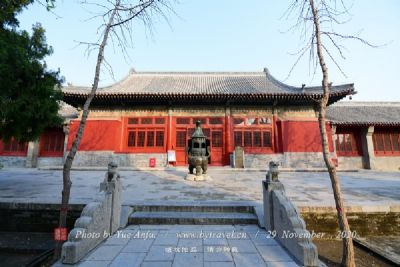Hami Jingnei Fengsui Yizhi: A Comprehensive Travel Guide to Xinjiang’s Spiritual Heritage
An Essential Guide to Visiting Hami Jingnei Fengsui Yizhi
In This Guide
- An Essential Guide to Visiting Hami Jingnei Fengsui Yizhi
- The Rich History of Hami Jingnei Fengsui Yizhi
- Main Highlights: What to See at Hami Jingnei Fengsui Yizhi
- Planning Your Visit: A Practical Guide
- Tickets, Hours, and Booking
- How to Get There
- Local Cuisine and Accommodation
- Frequently Asked Questions
- Final Thoughts on Your Trip
Nestled in the heart of Xinjiang, the Hami Jingnei Fengsui Yizhi, or Hami Beacon Tower Ruins, offers a compelling glimpse into China’s ancient military history. This remarkable site is not just a monument to the past; it embodies the enduring spirit of the Silk Road, where cultures collided and civilizations thrived. Built during the Han Dynasty, these beacon towers served as crucial watchpoints along the ancient trade routes, alerting travelers and communities of impending danger and facilitating communication across vast distances.
As you explore the remnants of these storied structures, you will be transported back to an era of strategic fortifications and intricate defense systems that shaped the region’s history. The Hami Beacon Towers, with their striking earthen architecture, are a testament to the ingenuity of ancient builders who crafted these outposts to withstand the test of time and elements.
Visiting the Hami Jingnei Fengsui Yizhi is not merely an archaeological adventure; it’s an opportunity to connect with a rich tapestry of stories that span millennia. Surrounded by the stunning landscapes of the Tianshan Mountains and the expansive Gobi Desert, the site offers breathtaking views that enhance the experience of discovery. Whether you are an avid historian, a culture enthusiast, or simply a curious traveler, the Hami Beacon Tower Ruins promise a remarkable journey into the ancient world, revealing the strategic importance of this location and its role in the grand narrative of the Silk Road.
Prepare to delve into the mysteries of the past, as each stone and structure whispers tales of resilience, vigilance, and the spirit of unity that once thrived in this vibrant area.
The Rich History of Hami Jingnei Fengsui Yizhi
The Hami Jingnei Fengsui Yizhi, or Hami Beacon Tower Ruins, stands as a testament to the rich historical tapestry of the Hami region in Xinjiang, China. This ancient military structure, constructed during the Han Dynasty, reflects the strategic importance of Hami along the Silk Road, serving as a critical communication relay point between various regions of China and Central Asia.

Hami Jingnei Fengsui Yizhi.
Dating back over 2,000 years, the beacon was part of a network of signal towers used to alert nearby military garrisons of impending threats, particularly from nomadic tribes and other potential invaders. The architecture of the beacon, made primarily from rammed earth, showcases traditional construction techniques that have withstood the test of time. Originally, these towers were built with a square base, tapering as they rose, which not only provided stability but also a commanding view of the surrounding landscape.
Throughout its history, the Hami Beacon Tower witnessed numerous historical events, including military campaigns and trade activities that defined the region’s economic landscape. Its strategic location allowed it to monitor the bustling trade routes that passed through Hami, facilitating the exchange of goods, cultures, and ideas between East and West.
Despite the passage of centuries, the Hami Jingnei Fengsui Yizhi remains remarkably well-preserved, offering a glimpse into the ancient military strategies and architectural practices of the time. The site is not merely an archaeological relic; it is a symbol of the region’s enduring legacy as a crossroads of commerce and culture. Visitors today can explore the ruins and imagine the vibrant history that unfolded around this ancient beacon, making it a must-visit site for those interested in the historical narratives of the Silk Road and the evolution of military architecture in ancient China.
In recent years, efforts have been made to restore and promote the site, enhancing its role as a cultural landmark and a tourist attraction. The Hami Jingnei Fengsui Yizhi is not only a reminder of the past but also a vital part of the present, continuing to draw interest from historians, archaeologists, and travelers alike.
Main Highlights: What to See at Hami Jingnei Fengsui Yizhi
Hami Jingnei Fengsui Yizhi, also known as the Kizil Gaha Beacon Tower, is a remarkable historical site nestled in the heart of Xinjiang, China. This ancient military structure, constructed during the Han Dynasty, stands as a testament to the region’s rich cultural heritage and strategic significance along the Silk Road.
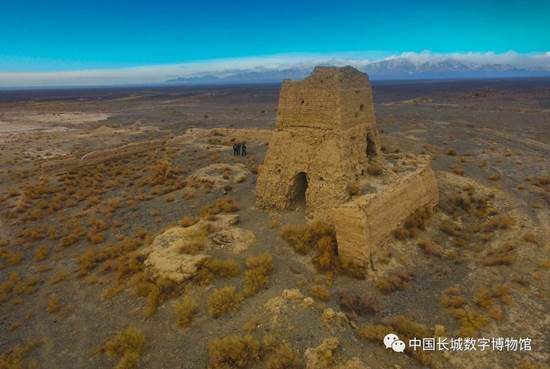
Hami Jingnei Fengsui Yizhi.
Visitors will marvel at the impressive architecture of the beacon tower, which has withstood the test of time for over two millennia. The structure boasts a rectangular base measuring 6 meters by 4.5 meters and rises to an impressive height of 16 meters. Its unique design features a tapering structure that gives it a distinctive profile against the backdrop of the arid landscape.
The site is not only significant for its architecture but also for its historical context. As one of the few remaining beacons from the ancient Silk Road, Kizil Gaha served as a communication point for ancient military operations and is a key element in understanding the region’s past. The walls of the tower are built with rammed earth, showcasing the construction techniques of ancient China.
Exploring the Kizil Gaha offers a rare glimpse into the enduring legacy of the Silk Road and the military strategies that shaped it. The surrounding area is equally stunning, with picturesque views of the rugged terrain and the opportunity to witness the natural beauty of Xinjiang. Whether you’re a history buff or simply looking to soak in the scenic surroundings, a visit to this beacon site is a must.
As you plan your journey, consider taking a guided tour to fully appreciate the historical significance and architectural marvel of Kizil Gaha. Engaging with local guides can provide deeper insights into the stories behind this ancient beacon, enriching your travel experience in this fascinating part of China.
Planning Your Visit: A Practical Guide
Practical Guide to Visiting Hami Jingnei Fengsui Yizhi (Hami Beacon Tower Ruins)
When planning your visit to the Hami Beacon Tower Ruins, it’s essential to be well-prepared to ensure a smooth and enjoyable experience. Here are some practical tips and information to help you make the most of your trip.

Hami Jingnei Fengsui Yizhi.
Location and Access
The Hami Beacon Tower Ruins, known locally as 克孜尔尕哈烽燧 (Kezilgah Beacon), is situated approximately 10 kilometers southeast of Kucha County in the Aksu Prefecture of Xinjiang, China. The site can be accessed by car or public transport from nearby towns, with rental vehicles being the most convenient option for those looking to explore the surrounding areas. The nearest major city is Hami, which provides various transportation options.
Getting There:
– By Car: Renting a vehicle is advisable as it allows for flexibility in exploring the region. The roads may be challenging, so consider renting a four-wheel-drive vehicle.
– Public Transport: Local buses may connect Kucha to the site, but services can be infrequent. Check the latest schedules in advance.
Best Time to Visit
The ideal seasons to visit the Hami Beacon Tower Ruins are spring (April to June) and autumn (September to November). During these months, the weather is usually mild and pleasant, making it conducive for outdoor exploration. Summer can be extremely hot, while winter temperatures may drop significantly, so plan your visit accordingly.
What to Bring
- Comfortable Footwear: The site requires a fair amount of walking, often on uneven terrain.
- Sun Protection: Sunscreen, sunglasses, and a hat are essential, as shade is limited.
- Water and Snacks: There are few facilities available nearby, so bringing water and snacks is advisable.
- Camera: The ruins and surrounding landscapes offer stunning photo opportunities, so don’t forget your camera or smartphone.
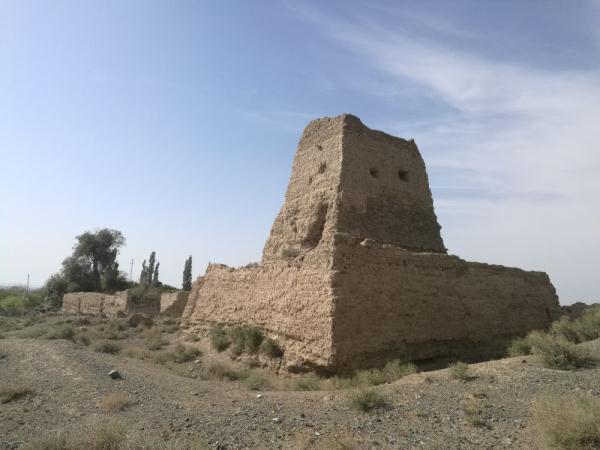
Hami Jingnei Fengsui Yizhi.
Entry Information
The Hami Beacon Tower Ruins has a low entry fee, making it accessible for all visitors. Check local resources for the most current ticket prices and opening hours. Generally, the site is open from 10:00 AM to 7:00 PM, but it’s wise to verify before your visit.
Exploring the Ruins
The Hami Beacon Tower is an ancient military structure dating back over 2,000 years, making it a significant historical site along the Silk Road. As you explore:
- Guided Tours: Consider joining a guided tour to gain deeper insights into the history and significance of the ruins.
- Photography: The unique architecture and picturesque landscape provide excellent opportunities for photography, especially during sunrise or sunset.
- Respect the Site: As with all historical sites, please respect the ruins and the environment. Avoid climbing on the structures to preserve them for future generations.

Hami Jingnei Fengsui Yizhi.
Nearby Attractions
While visiting the Hami Beacon Tower Ruins, you can also explore other nearby attractions, including:
- Kucha Old Town: A short drive away, this historical town is rich in Uyghur culture and offers a variety of dining and shopping options.
- Kizil Grottoes: A UNESCO World Heritage site known for its ancient Buddhist cave art, located not far from the beacon.
Accommodation
If you’re planning to stay overnight, various accommodation options are available in Kucha and Hami. From budget hostels to mid-range hotels, it’s advisable to book in advance, especially during peak travel seasons.

Hami Jingnei Fengsui Yizhi.
Conclusion
Visiting the Hami Beacon Tower Ruins offers a glimpse into China’s rich historical tapestry, particularly its significance along the ancient Silk Road. By planning ahead and being prepared, you can ensure a memorable experience at this fascinating archaeological site.
Tickets, Hours, and Booking
When planning your visit to the Hami Jingnei Fengsui Yizhi (Hami Ancient Beacon Towers), understanding the ticketing details is essential for a smooth experience. Here is what you need to know:
Ticket Information
-
Admission Fee: The entrance ticket for the Hami Jingnei Fengsui Yizhi is quite affordable, typically priced at around 20 RMB. This makes it a budget-friendly addition to your itinerary.
-
Opening Hours: The site is generally open from 10:00 AM to 7:00 PM. It’s advisable to arrive early in the day to fully enjoy the site and avoid the crowds, especially during weekends and holidays.
-
Access: The site is easily accessible from the city center of Hami. Public transport options are available, and for those driving, there is ample parking nearby.
-
Guided Tours: While self-guided exploration is encouraged, guided tours are also available for a more in-depth understanding of the historical significance of the beacon towers. Prices for guided tours may vary, so check locally for current rates.
-
Discounts: Discounts may be available for students, seniors, and groups, but it’s best to confirm this at the ticket counter on arrival.
Make sure to check for any seasonal changes in hours or fees before your visit, as these can occasionally vary. Enjoy your journey through the rich history of the Hami region!

Hami Jingnei Fengsui Yizhi.
How to Get There
When planning your trip to Hami Jingnei Fengsui Yizhi (哈密境内烽燧遗址), understanding the transportation options available will greatly enhance your travel experience. Given Hami’s unique location in Xinjiang, here’s a comprehensive guide to getting around and accessing this fascinating historical site.
Getting to Hami
By Air:
Hami has its own airport, Hami Airport (HMI), which offers flights connecting to major cities such as Urumqi, Beijing, and Xi’an. Upon arrival, taxis are readily available to take you to various destinations within the city.
By Train:
The Hami Railway Station serves as a major hub on the railway network. High-speed trains connect Hami with Urumqi and other key locations, making it a convenient option for travelers. The station is centrally located, and taxis or local buses can help you reach your hotel or attractions from there.
By Bus:
Long-distance buses operate from various cities to Hami. The Hami Bus Station is a focal point for intercity travel, where you can find buses to nearby attractions and towns, including the Fengsui Yizhi. Local buses and minibuses also provide service throughout the city.
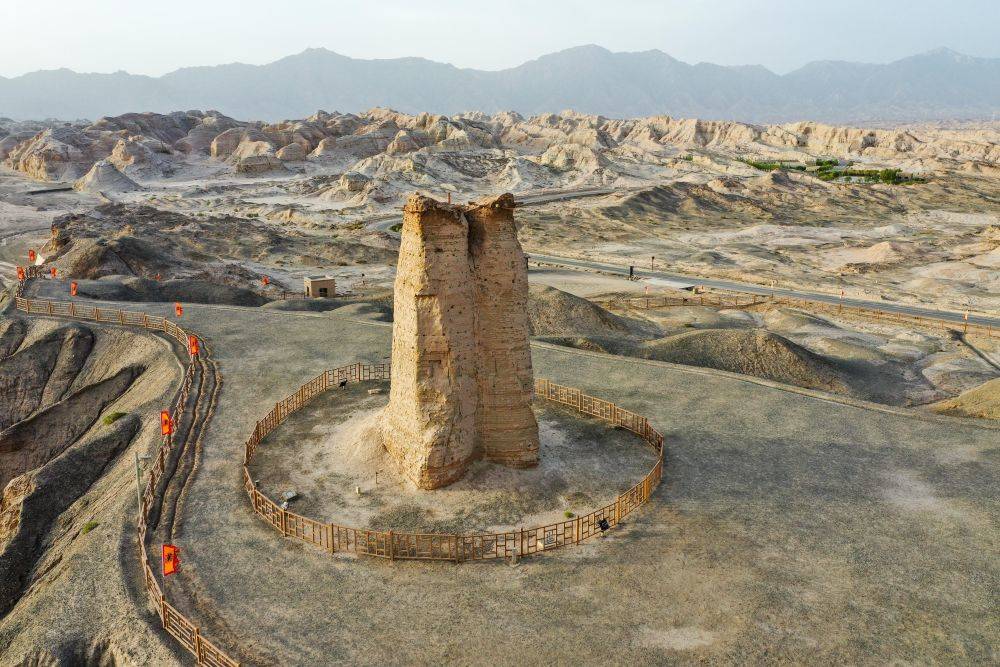
Hami Jingnei Fengsui Yizhi.
Getting Around Hami
Local Transport:
Within Hami, public transportation is accessible and budget-friendly. Buses and shared minibuses cover most areas, including the outskirts where the Fengsui Yizhi is located.
Taxis:
Taxis are a practical option for tourists, especially when traveling to specific sites like the Hami Jingnei Fengsui Yizhi. They’re relatively inexpensive and can be hailed on the street or booked via apps. Ensure to have your destination written in Chinese to show the driver, as English may not be widely spoken.
Car Rentals:
For those looking for flexibility, renting a car can be an excellent choice. Several rental companies operate in Hami, providing options for both standard and off-road vehicles. Given the rugged terrain around the Fengsui Yizhi, a 4×4 is recommended. Be sure to obtain an International Driving Permit if you plan to drive.
Specific Directions to Hami Jingnei Fengsui Yizhi
To reach Hami Jingnei Fengsui Yizhi from Hami city center, the most efficient way is to drive or take a taxi. The site is approximately 10 kilometers southeast of Hami, near the northern slopes of the surrounding mountains.
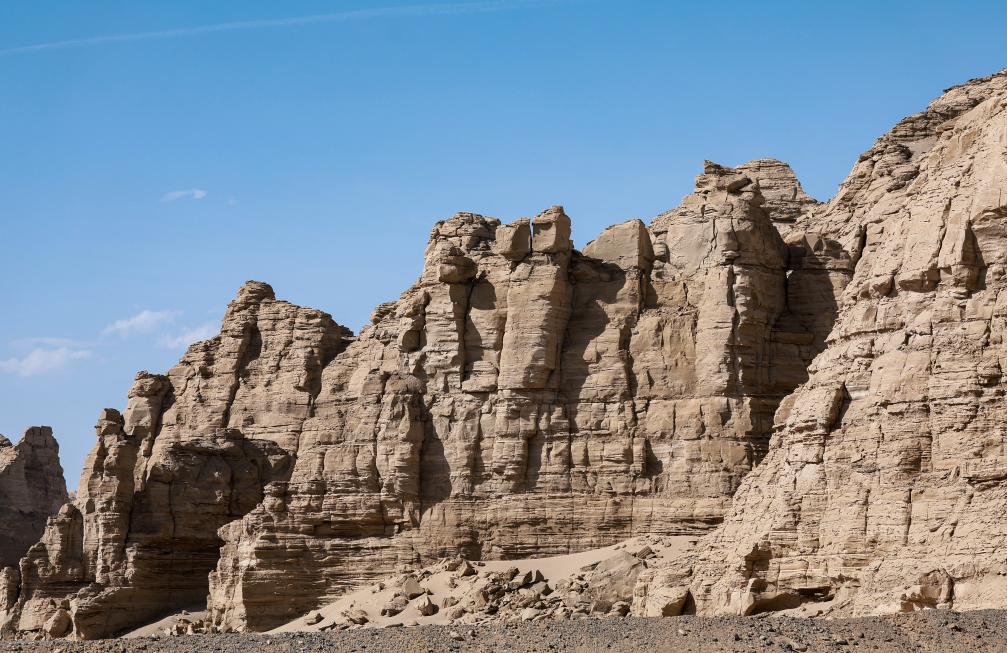
Hami Jingnei Fengsui Yizhi.
- By Taxi: Simply tell your driver “哈密境内烽燧遗址” (Hami Jingnei Fengsui Yizhi) and they will know the route.
- By Car: Take the main road southeast from the city, following signage towards the scenic areas. The route is straightforward, but be cautious of road conditions, especially after rain.
Tips for Travelers
- Plan Ahead: Due to the remote location, it’s advisable to check local weather conditions and road status before setting out, especially if you plan to drive.
- Language Barrier: Having key phrases in Chinese or a translation app can be immensely helpful, as English is not widely spoken.
- Time Management: Allocate enough time for your visit to the Fengsui Yizhi, as the site is not just about the structure itself but also the surrounding landscapes and historical context.
With this transportation guide, you’ll be well-equipped to navigate your way to Hami Jingnei Fengsui Yizhi and enjoy all that this historic site has to offer. Safe travels!
Local Cuisine and Accommodation
When visiting Hami Jingnei Fengsui Yizhi, travelers can look forward to a delightful culinary experience and comfortable accommodations that reflect the unique culture of the region.
Culinary Delights
Nang (饢) – The Local Flatbread
No visit to Hami is complete without sampling the local specialty, Nang. This traditional Uyghur flatbread is a staple in the region, often served with various dishes or enjoyed on its own. The best place to experience Nang is at Kuche Great Nang City (库车大馕城), where visitors can watch artisans prepare this delicious bread in large ovens. Here, you can also find different varieties, such as sesame and walnut Nang, which add a delightful twist to the classic flavor.
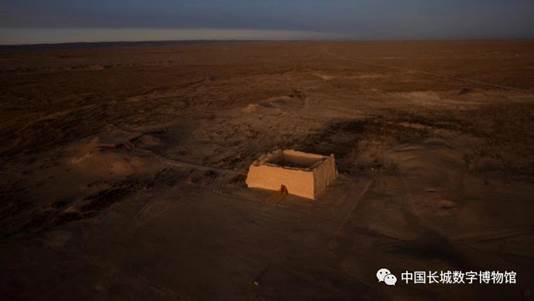
Hami Jingnei Fengsui Yizhi.
Dumplings and Kebabs
For those looking to savor authentic Uyghur cuisine, head to local restaurants in the old town of Kuche, where tender dumplings and juicy lamb kebabs are prepared with aromatic spices. Kuche Old Town features several eateries serving flavorful dishes, and the vibrant atmosphere makes dining here a memorable experience.
Dried Fruits and Nuts
Hami is famous for its sweet melons and dried fruits, particularly apricots and raisins. Stop by local markets to purchase fresh produce or dried snacks to enjoy during your travels. These natural treats are perfect for a quick energy boost while exploring the historical sites.
Places to Stay
Local Hotels
For accommodation, Hami offers a range of options. Hami Huamao Hotel and Kuche Hotel are popular choices known for their comfortable rooms and friendly service. These hotels typically provide amenities such as free Wi-Fi and breakfast options, ensuring a pleasant stay for travelers.
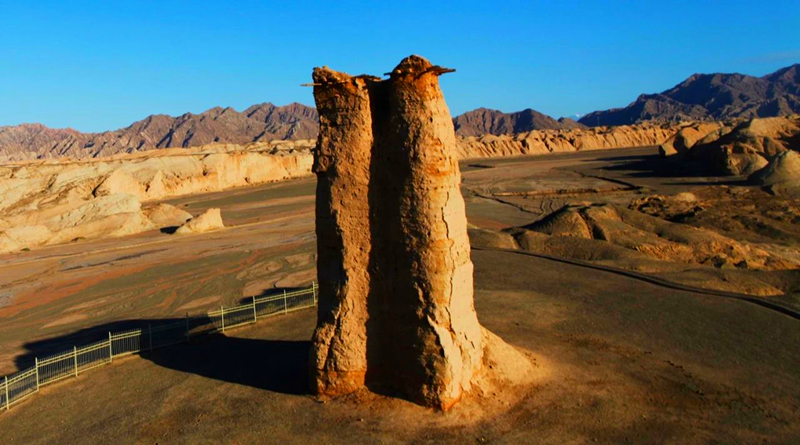
Hami Jingnei Fengsui Yizhi.
Boutique Stays
If you prefer a unique experience, consider booking a boutique hotel or guesthouse in the heart of Kuche. These smaller establishments often reflect local architecture and provide an intimate atmosphere, allowing you to immerse yourself in the culture even further.
Camping and Eco-Lodges
For the adventurous spirit, camping near the scenic spots around Hami is a fantastic way to experience the region’s natural beauty. Certain eco-lodges offer comfortable tents and basic amenities, allowing you to enjoy the stunning starry skies of the desert while being close to nature.
In summary, whether indulging in the rich flavors of Uyghur cuisine or resting at one of Hami’s welcoming accommodations, travelers are sure to have an enriching experience that captures the essence of this historic region.
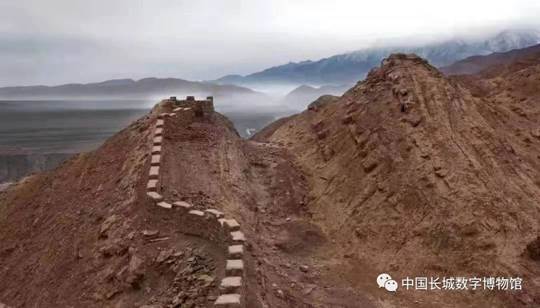
Hami Jingnei Fengsui Yizhi.
Frequently Asked Questions
-
What is Hami Jingnei Fengsui Yizhi (哈密境内烽燧遗址)?
Hami Jingnei Fengsui Yizhi refers to the ancient beacon towers located in Hami, Xinjiang. These structures are remnants of the Han Dynasty military communication system, used to relay messages and warnings across the vast desert landscapes of the Silk Road. -
How do I get to Hami Jingnei Fengsui Yizhi?
The site is located approximately 10 kilometers southeast of Kucha County in the Aksu Region of Xinjiang. Visitors can reach the site by car or local transportation. It’s advisable to rent a vehicle, preferably a 4WD, as the access roads can be rugged. -
What are the opening hours for the site?
Hami Jingnei Fengsui Yizhi is generally open from 10:00 AM to 7:00 PM. However, it’s wise to check for seasonal changes in hours before planning your visit. -
Is there an entrance fee to visit Hami Jingnei Fengsui Yizhi?
Yes, there is a nominal entrance fee, which is generally considered affordable. The exact price may vary, so it’s best to confirm before your visit. -
What should I wear when visiting the site?
Given the desert climate, it’s recommended to wear comfortable, breathable clothing, sturdy shoes, and a hat to protect against the sun. Don’t forget sunscreen and plenty of water, as the area can be hot and dry. -
Are there any facilities available at Hami Jingnei Fengsui Yizhi?
The site is primarily historical and does not have extensive tourist facilities. Visitors should plan accordingly, bringing their own food, water, and necessary supplies for the trip. -
What other attractions are nearby?
In addition to the beacon towers, visitors can explore the Hami Museum, Hami Wangfu (the former residence of the local ruler), and the stunning landscapes of the surrounding desert and mountains. The Hami region is rich in cultural history and natural beauty. -
Is it safe to visit Hami Jingnei Fengsui Yizhi?
Yes, the site is generally safe for visitors. However, due to its remote location, it’s essential to stay aware of your surroundings, travel in groups if possible, and ensure your vehicle is in good condition before heading out.
Final Thoughts on Your Trip
As you explore the ancient Hami Jingnei Fengsui Yizhi, you will find yourself immersed in a rich tapestry of history and culture that spans millennia. This remarkable site not only offers a glimpse into the strategic military communications of the Silk Road era but also invites you to reflect on the resilience of the past, as the remnants of these watchtowers stand proudly against the test of time.
Your journey through the captivating landscapes of Hami, complemented by the surrounding natural beauty and vibrant local culture, will undoubtedly leave you with lasting memories. Whether you’re captivated by the stunning desert vistas, the historical architecture, or the warmth of the local people, Hami promises to be a destination that resonates deeply within your travel experience.
Embrace the adventure of discovery, and allow the echoes of history to guide you as you traverse this enchanting region. Every step taken at Hami Jingnei Fengsui Yizhi is not just a journey through space but a passage through the rich narrative of human civilization.
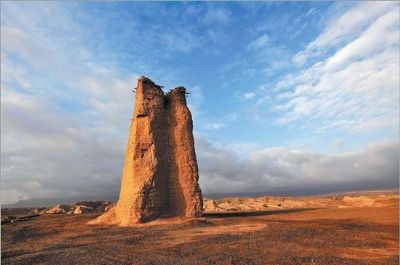
Hami Jingnei Fengsui Yizhi.
